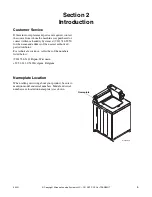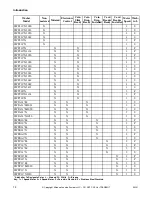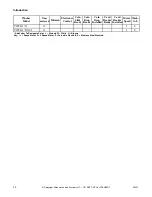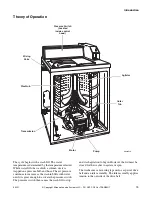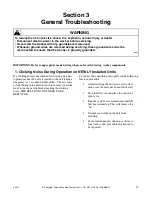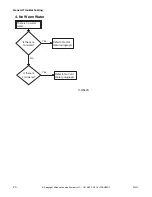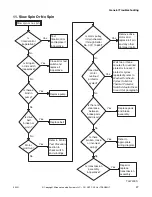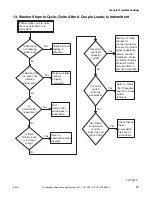
16
39201
© Copyright, Alliance Laundry Systems LLC – DO NOT COPY or TRANSMIT
During agitation, the motor runs in the
counterclockwise direction. The spring tension on the
idler pulley applies the tension required to reduce the
slack on the drive belt and maintain maximum belt to
motor pulley contact. This eliminates belt slippage and
ensures an efficient wash action, even with extra large
loads.
The belt drives the transmission drive pulley in the
counterclockwise direction. The pulley drives the helix
which is splined to the input shaft of the transmission.
This causes the input shaft to turn inside of a roller
clutch which is pressed into the transmission cover.
This roller clutch acts as a bearing in the
counterclockwise direction allowing the transmission
gears to operate. The transmission’s rack and pinion
gear design produces a 210 degree agitation stroke at
the output shaft of the transmission which drives the
agitator. The brake assembly remains locked during the
agitation mode since no pressure is applied to it by the
transmission drive pulley.
After the wash agitation is completed, the timer
advances into the first spin. During spin, the motor
reverses turning in the clockwise direction to spin the
water out of the washtub. The combination of water,
washtub and load weight cause the drive belt tension on
the idler side of the belt to overtake the idler spring
pressure allowing the belt to become slack on the
opposite side. This reduces the belt to pulley contact
and allows slipping between the belt and pulley.
As water is removed by the pump and the momentum
of the washtub increases, the idler spring tension
gradually overcomes the belt tension removing the belt
slack. This eventually increases the belt to pulley
contact until maximum spin speed is achieved.
The drive pulley turns clockwise riding up the ramps of
the helix, exerting pressure on the brake and forcing it
to release from brake pads. The helix drives the input
shaft of the transmission, and when the input shaft turns
in the clockwise direction the roller clutch locks onto
the shaft causing the entire transmission assembly to
turn. None of the gears in the transmission are
operating at this time. The hub of the washtub is splined
to the transmission tube and rotates with the
transmission assembly. The centrifugal force created
by the spinning washtub causes water to be extracted
from the clothes.
Water is introduced during the first spin to “SPRAY”
the garments and remove suds from them. The initial
spin is followed by rinse agitation to rinse away any
detergent residue. The washer fills and then agitates
like the wash portion of the cycle. Following rinse
agitation, a final spin extracts the rinse water from the
clothes preparing them for the dryer.




